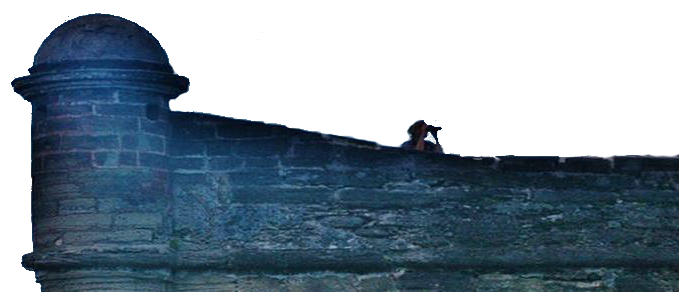M86.0
Acute Hematogenous Osteomyelitis
M86.1
Other Acute Osteomyelitis
M86.2
Subacute Osteomyelitis
M86.3
Chronic Multifocal Osteomyelitis
M86.4
Chronic Osteomyelitis With Draining Sinus
M86.5
Other Chronic Hematogenous
Osteomyelitis
M86.6
Other Chronic Osteomyelitis
M87 Osteonecrosis
Other osteopathies M86-M90 >
Type 1 Excludes
postprocedural osteopathies (M96.-)
Osteomyelitis M86- >
Use Additional
code (B95-B97) to identify infectious agent
code to identify major osseous defect, if applicable
(M89.7-)
Type 1 Excludes
osteomyelitis due to:
echinococcus (B67.2)
gonococcus (A54.43)
salmonella (A02.24)
Type 2 Excludes
ostemyelitis of:
orbit (H05.0-)
petrous bone (H70.2-)
vertebra (M46.2-)
Clinical Information
An acute or chronic inflammation of the bone and
its structures due to infection with pyogenic bacteria.
Inflammation of the bone caused by an infection, which
may spread to the bone marrow and tissues near the bone.
Osteomyelitis can cause severe pain in the infected bone.
If it is not treated, it can kill bone tissue.
Inflammation of the bone marrow and adjacent bone caused
by a pyogenic organism; it may remain localized or may
spread through the bone to involve the marrow, cortex,
cancellous tissue, and periosteum.
Osteonecrosis M87- >
Use Additional
code to identify major osseous defect, if applicable (M89.7-)
Type 1 Excludes
juvenile osteonecrosis (M91-M92)
osteochondropathies (M90-M93)
Includes
avascular necrosis of bone
Clinical Information
A disorder characterized by necrotic changes in the bone tissue
due to interruption of blood supply. Most often affecting the
epiphysis of the long bones, the necrotic changes result in the
collapse and the destruction of the bone structure.
Death of a bone or part of a bone, either atraumatic or posttraumatic.
Death of bone tissue caused by loss of blood supply to the bone
Death of bone tissue due to traumatic or nontraumatic causes.
Necrotic changes in the bone tissue due to interruption of blood
supply. Most often affecting the epiphysis of the long bones, the
necrotic changes result in the collapse and the destruction of
the bone structure.
Osteitis deformans [Paget's disease of bone] M88- >
Type 1 Excludes
osteitis deformans in neoplastic disease (M90.6)
Clinical Information
A chronic condition in which both the breakdown and regrowth of
bone are increased. Paget disease of bone occurs most frequently
in the pelvic and leg bones, skull, and lower spine. It is most
common in older individuals, and may lead to bone pain, deformities,
and fractures.
A disease marked by repeated episodes of increased bone resorption
followed by excessive attempts at repair, resulting in weakened,
deformed bones of increased mass. The resultant architecture of the
bone assumes a mosaic pattern in which the fibers take on a haphazard
pattern instead of the normal parallel symmetry.
A disease of bone that initially results in the excessive resorption
of bone (by osteoclasts) followed by the replacement of normal bone
marrow with vascular and fibrous tissue.
Disease marked by repeated episodes of increased bone resorption followed
by excessive repair, resulting in weakened, deformed bones of increased mass.
Paget's disease of bone causes your bones to grow larger and weaker than
normal. They also might break easily. The disease can lead to other health
problems, too, such as arthritis and hearing loss. You can have paget's
disease in any bone, but it is most common in the spine, pelvis, skull and legs.
The disease might affect one or several bones, but not your entire skeleton.
More men than women have the disease. It is most common in older people. Many
people do not know they have paget's disease because their symptoms are mild.
For others, symptoms can include
pain
enlarged bones
broken bones
damaged cartilage in joints
no one knows what causes paget's disease. In some cases, a virus might be
responsible.
It tends to run in families. You can treat paget's disease with medicine and
sometimes surgery. A good diet and exercise might also help. nih: national
institute of arthritis and musculoskeletal and skin diseases
Osteopathies in diseases classified elsewhere M90- >
Type 1 Excludes
osteochondritis, osteomyelitis, and osteopathy (in):
cryptococcosis (B45.3)
diabetes mellitus (E08-E13 with .61-)
gonococcal (A54.43)
neurogenic syphilis (A52.11)
renal osteodystrophy (N25.0)
salmonellosis (A02.24)
secondary syphilis (A51.46)
syphilis (late) (A52.77)
M88 Osteitis Deformans [Paget's Disease of Bone]
M88.0
Osteitis Deformans of Skull
M88.1
Osteitis Deformans of Vertebrae
M88.8
Osteitis Deformans of Other Bones
M88.9
Osteitis Deformans of Unspecified Bone
M89 Other Disorders of Bone
M89.0 Algoneuro-dystrophy
M89.1
Physeal
Arrest
M89.2
Other Disorders of Bone Development
& Growth
M89.3 Hypertrophy
of Bone
M89.4
Other Hypertrophic Osteoarthropathy
M89.5
Osteolysis
M89.6 Osteopathy After Poliomyelitis
M90 Osteopathies in Diseases Classified Elsewhere
M90.5 Osteonecrosis in Diseases Classified Elsewhere
M90.6
Osteitis Deformans in Neoplastic Diseases
M90.8
Osteopathy in Diseases Classified Elsewhere
™


Copyright 2006-2023 Automated Clinical Guidelines, LLC. All rights reserved.
™
.png?crc=4187891543)
Home Contact FAQ
Account
